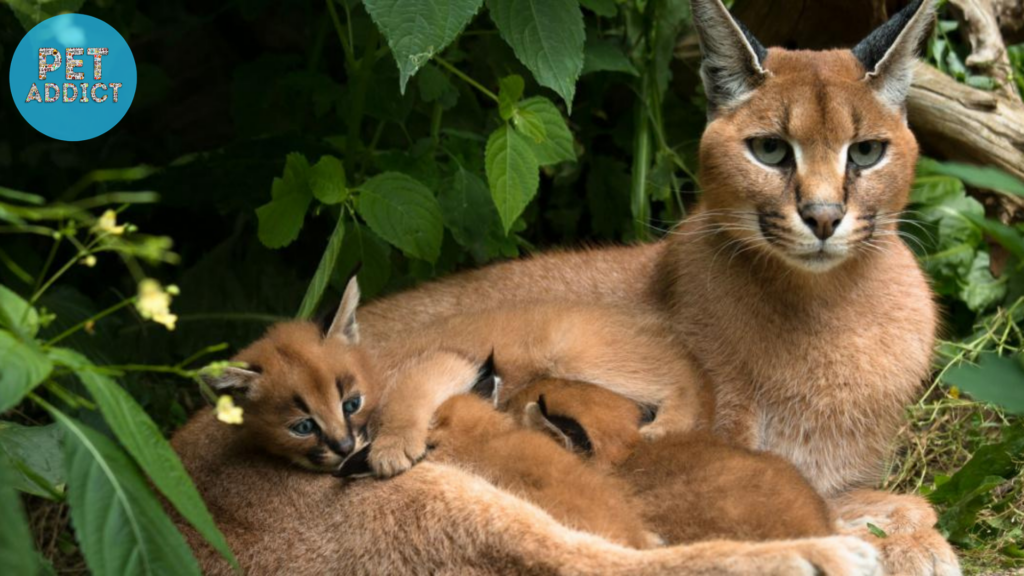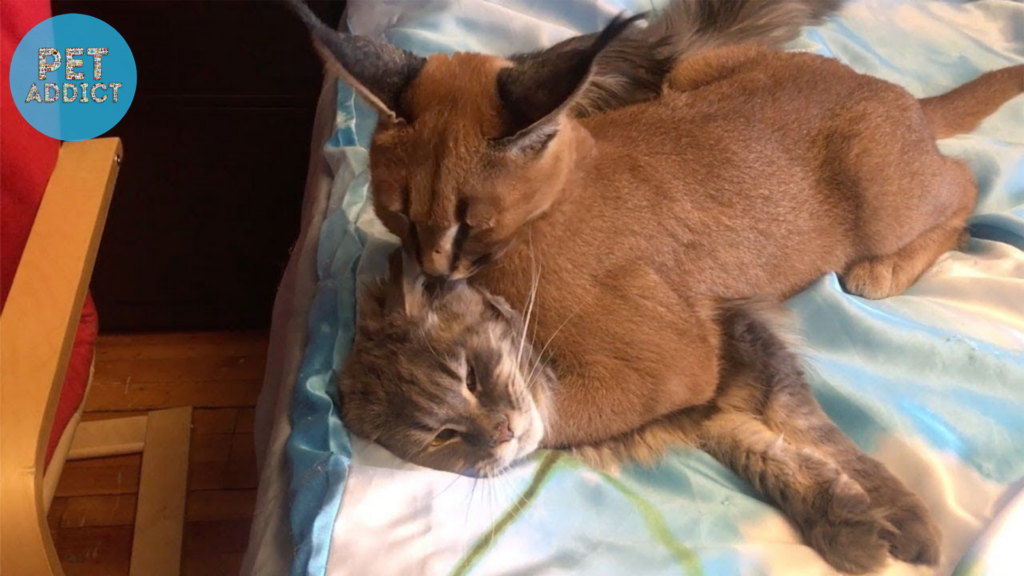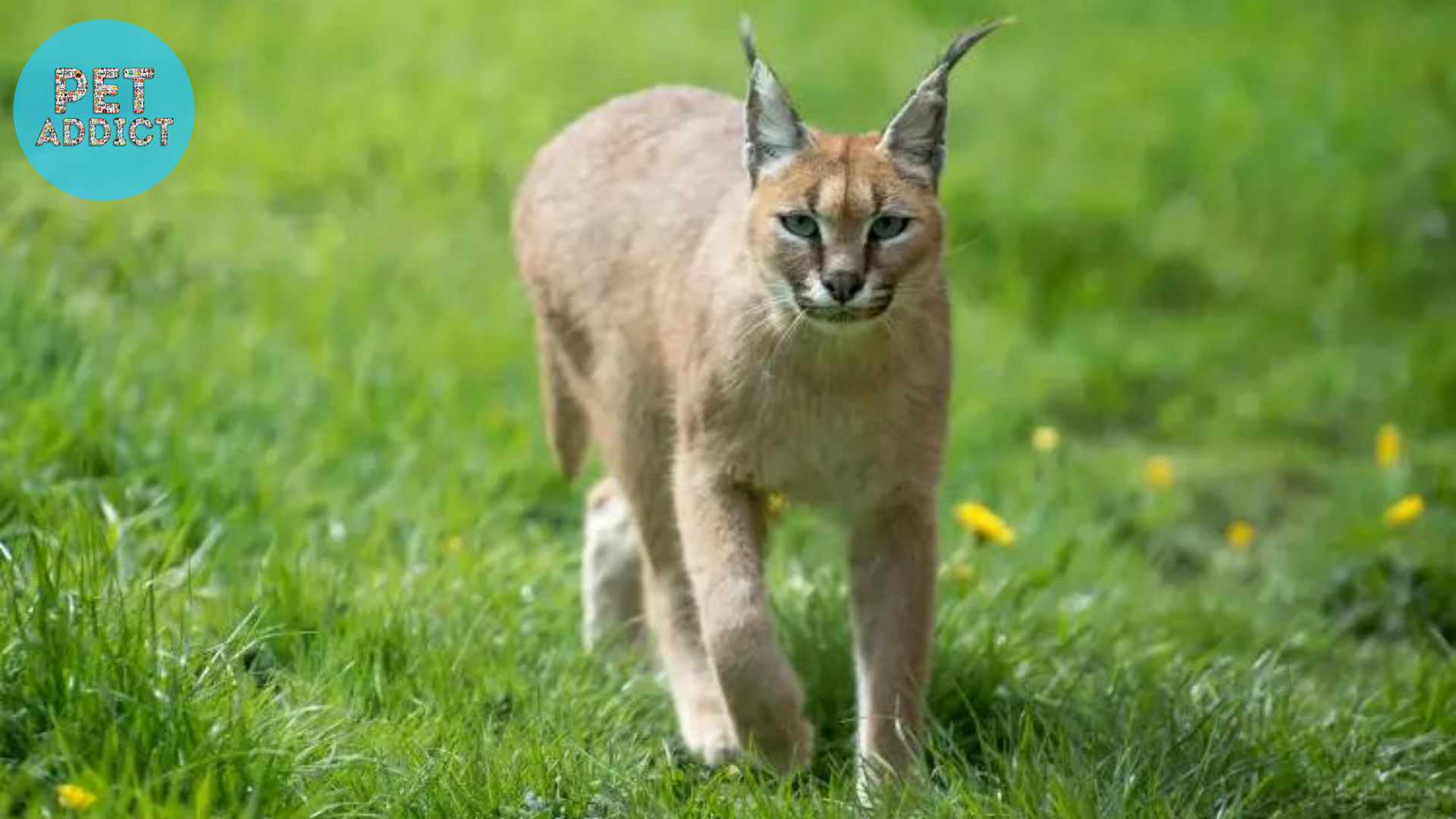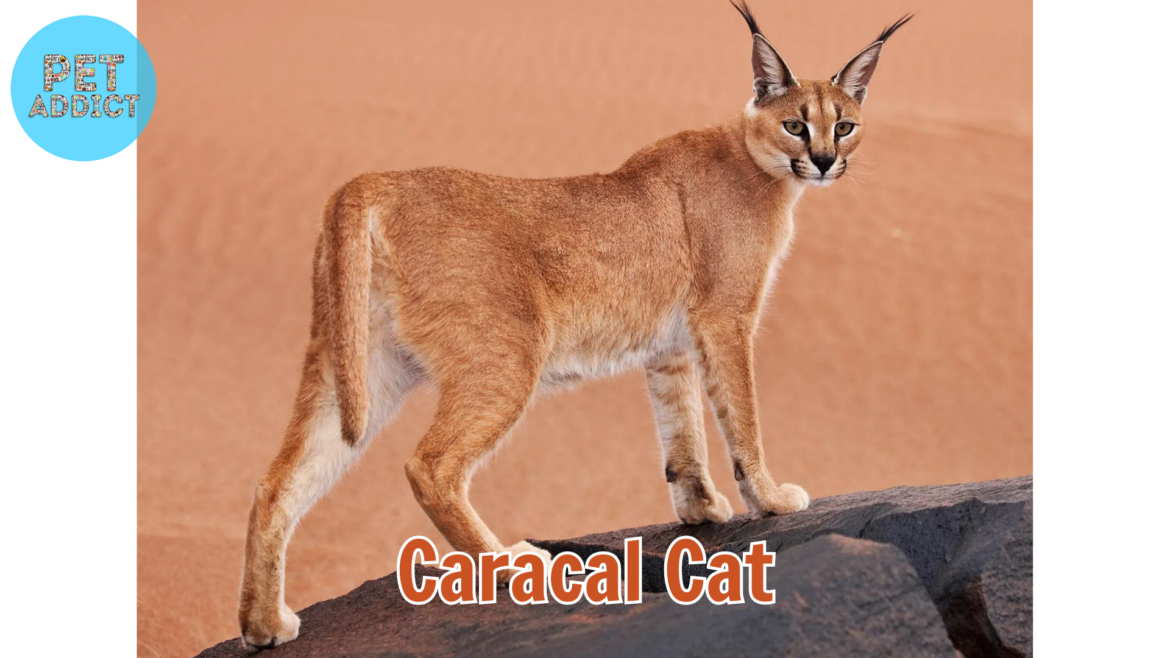The caracal cat, scientifically named Caracal caracal, mesmerizes and captivates with its unique appearance and remarkable abilities. Researchers and wildlife enthusiasts are drawn to this fascinating feline, which inhabits various regions of Africa, the Middle East, and parts of Asia. This article delves into the captivating world of the caracal cat, discussing its physical traits, behavior, habitat, and conservation status.
PetAddict.net – The best place where you can find everything about your pet!
Notable Physical Features

Ears
One of the most striking features is the caracal’s tufted ears, adorned with distinct black tufts of hair. These tufts lend the caracal its name, derived from a Turkish term meaning “black ear.”
Coat
The caracal boasts a coat that varies in color, ranging from reddish-brown to tawny shades. Its short fur aids its adaptation to diverse environments.
Size
Caracal cats, medium-sized felines, exhibit sexual dimorphism, with males typically surpassing females in size. Their weight can range from 30 to 40 pounds, and they measure approximately 16 to 24 inches in height at the shoulder.
Behavior and Lifestyle

Agile Predators
The caracal cat excels in agility and stealth, making it an adept hunter. Its leaping ability allows it to catch birds in flight.
Nocturnal Behavior
Caracal cats are primarily active during the night, using their heightened night vision and keen senses for hunting.
Solitary Nature
These felines are generally solitary creatures, with males and females coming together primarily for mating purposes. They establish territories to avoid conflicts and competition.
Habitat and Range

Geographic Distribution
Caracal cats inhabit diverse habitats such as savannas, grasslands, woodlands, and scrublands. They can be found in regions across Africa, the Middle East, and southwestern Asia.
Adaptability
The caracal’s adaptability is evident as it thrives in various environments, including mountains, deserts, and even urban areas.
Conservation Status
Threats
The caracal cat faces numerous threats in the wild, including habitat loss, human-wildlife conflicts, and illegal poaching.
Importance of Conservation
Conservation efforts are crucial to preserve caracal populations and maintain ecosystem balance. Raising awareness and supporting habitat protection are vital steps.
Conclusion
The caracal cat is a captivating and adaptable feline species, embodying nature’s beauty and resilience. With its tufted ears, exceptional hunting skills, and ability to thrive in diverse landscapes, the caracal cat represents the intricacies of the natural world. As we continue to study and appreciate these majestic beings, it becomes our duty to contribute to their conservation. By backing initiatives aimed at habitat preservation and increasing awareness, we ensure that future generations can share the planet with these magnificent creatures.




